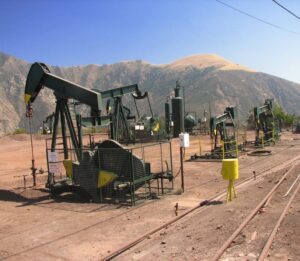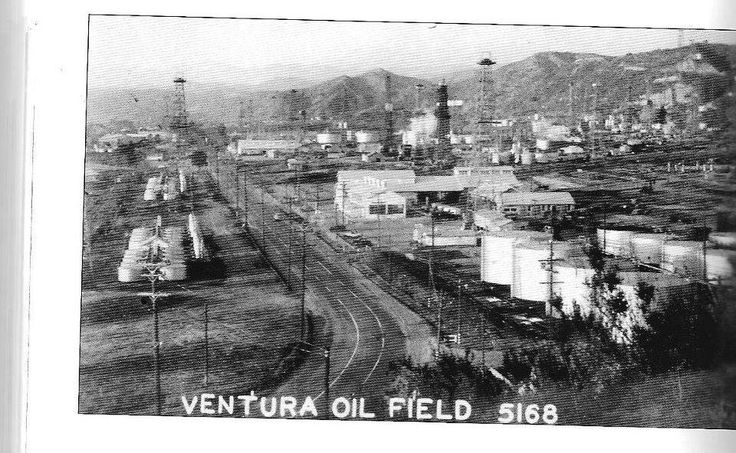Have any archival stuff that shows an Oil Rig By Chance?
by Richard Senate
Ventura’s connection to oil runs deep—both literally and historically. The Chumash people, the region’s original inhabitants, knew of the natural oil that seeped from the earth. They ingeniously used it to waterproof baskets and seal the seams of their plank canoes, known as tomols. They even discovered how to harden the tar for securing arrowheads to shafts.
 The padres at Mission San Buenaventura were also aware of the area’s oil seeps along the Ventura River. They used the substance as grease for their ox carts—their version of pickup trucks—and even distilled it into a crude fuel for lamps. By the 1860s, as the demand for whale oil dwindled, crude oil emerged as a replacement. In 1865, one of California’s earliest oil wells was dug near Sulphur Mountain in the Ojai Valley, reaching an impressive 700 feet with the limited tools of the time. Though it was a gusher, the oil was too thick for practical use.
The padres at Mission San Buenaventura were also aware of the area’s oil seeps along the Ventura River. They used the substance as grease for their ox carts—their version of pickup trucks—and even distilled it into a crude fuel for lamps. By the 1860s, as the demand for whale oil dwindled, crude oil emerged as a replacement. In 1865, one of California’s earliest oil wells was dug near Sulphur Mountain in the Ojai Valley, reaching an impressive 700 feet with the limited tools of the time. Though it was a gusher, the oil was too thick for practical use.
Ventura’s higher-quality crude oil, found near the Ventura River, proved more promising. In the late 1800s, George S. Gilbert, a former whale oil merchant, established one of California’s first commercial refineries on Main Street in Ventura. This early venture marked the beginning of the city’s oil legacy.
However, it wasn’t until January 10, 1914, that Ventura truly became an oil town. That day, the “Lloyd Number One” well struck oil at a depth of 2,558 feet. The gusher erupted with such force that it destroyed the drilling rig. This discovery brought Shell Oil to the region and led to the formation of Central Petroleum in 1917. By the early 1920s, additional wells, like Lloyd Number Nine and Lloyd Number Sixteen, were producing 5,000 barrels a day.
At its peak, the Ventura River Oil Field was second only to Signal Hill, producing an astounding 90,000 barrels a day. Oil became the lifeblood of Ventura’s economy, spurring not only extraction but also innovation. The city became a hub for oil tool manufacturing and new drilling technologies, cementing its status as a leader in the industry.
During World War II, Ventura’s oil fields were deemed so vital that a battery of coastal guns was installed at Seaside Park to protect the area from potential Japanese attacks. The cannons, mounted on circular platforms, could defend both the city and the oil fields.
The postwar era brought an unexpected visitor: a former Navy pilot and his wife, who stayed at the Pierpont Inn while learning about Ventura’s oil industry. Armed with newfound knowledge, the young man returned to Texas, became a successful oilman, and later ascended to the highest office in the land. His name? George H.W. Bush.
From its early days of tar pits and primitive wells to its boom as an oil production powerhouse, Ventura’s history is inextricably tied to the black gold beneath its soil.

